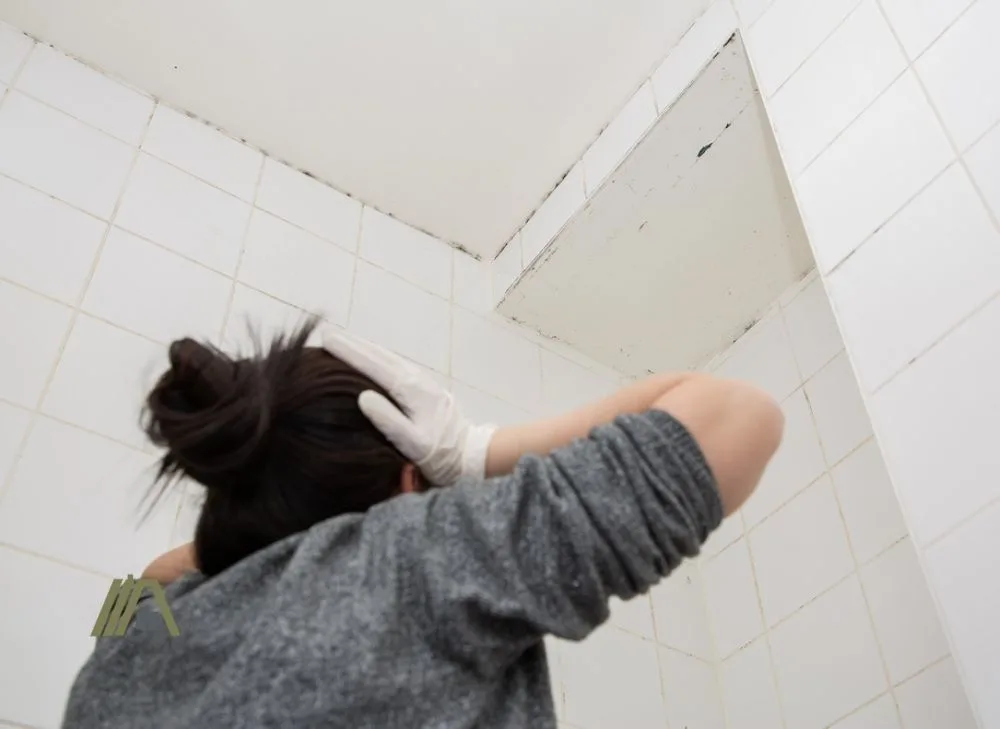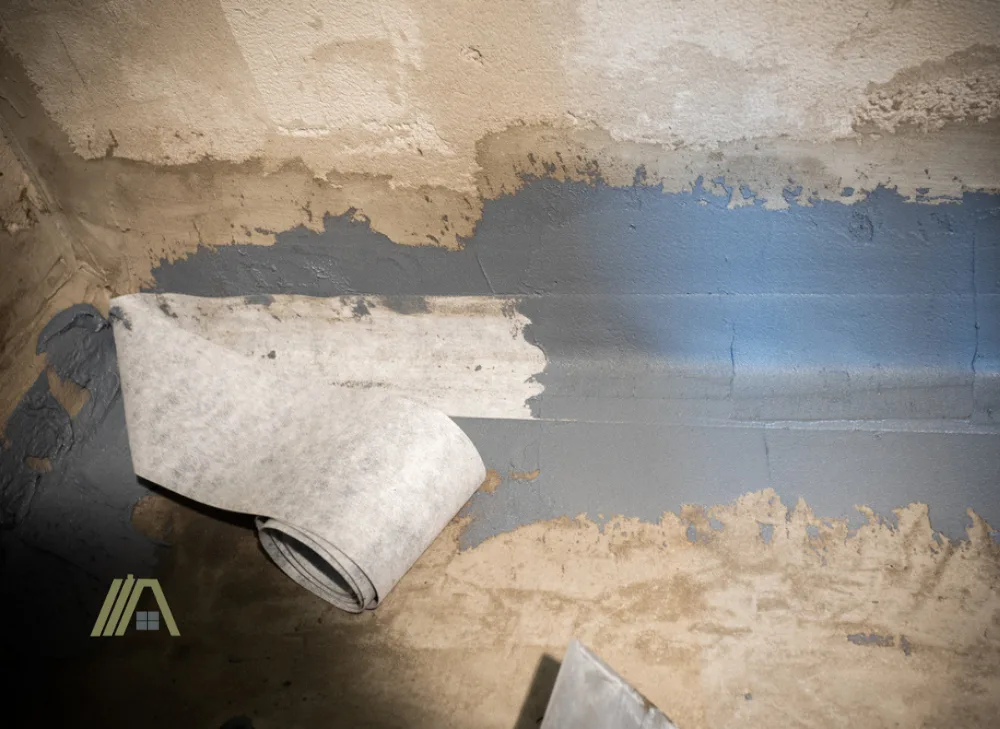It is common knowledge that water in the wrong places can be destructive to a home. Shower ceilings’ susceptibility to water damage can make them a costly problem waiting to happen if you don’t take steps to avoid it.
While technically, you are not required to waterproof your shower ceiling, failure to do so is likely to have negative consequences because most ceiling materials are not in themselves waterproof.

Waterproofing shower ceilings isn’t mandatory as per building codes. But it’s highly recommended. Even waterproof ceiling materials have joins and seams where water can penetrate. The ceiling can suffer water damage, and there are wires, metal pipes, and insulation in ceilings that will suffer from being wet.
Shower Ceiling Waterproofing Is Not Mandatory
The International Residential Code (IRC) serves as a guideline in the construction and maintenance of residential buildings.
Those familiar with the IRC’s thoroughness might be surprised to learn that they make no mention of shower ceiling waterproofing. Regardless, it is almost indisputable that shower ceilings are better when they are waterproofed.
It Is a Good Idea
The occasional splash and large amounts of steam make shower ceilings highly susceptible to mold and moisture damage.
Mold growth on surfaces exposed to as much moisture as shower ceilings can happen quite suddenly. On top of being just plain off-putting and odorous, mold is toxic to breathe in. Doing so can cause respiratory issues.

The constant moisture on a ceiling that is not waterproof will also have aesthetic consequences like peeling paint and water spots.
Most importantly, the integrity of your house will suffer. Extensive water damage can cause ceilings to sag and even collapse. And if there is damage to the ceiling of the first story of a two-story home, the floor above it will be weaker and will likely further the damage to the ceiling below.
Chances are, damage to your ceiling will have a costly repair. Water damage, especially in a ceiling, is a serious problem that will usually require professional attention. But it is also very preventable, and you don’t need to tear out and replace your ceiling to protect your home.
Then there are issues surrounding the pipes and wires that run above the ceiling. These can be damaged by water and lead to very severe consequences.
What Type of Waterproofing Is Best?
After you have decided that you want to waterproof your shower ceiling, it is important to know about the options you have, namely sheet membranes and liquid membranes.
Waterproof Sheet Membranes
Waterproof sheet membranes are a very popular form of waterproofing for shower ceilings. This method of waterproofing consists of applying a thin layer of material between a hard ceiling backing and the actual ceiling material.

Applying a waterproof membrane to a ceiling is quite simple.
- Apply thin-set to the hard ceiling backing.
- Unroll the correct amount of membrane material and press it over the thin-set.
- Allow it to dry.
Pros of waterproof membranes:
- Sheets are affordable (roughly $0.42 per square foot).
- Can usually be DIYed.
- Waterproofs your shower for 10 years +.
Cons of waterproof membranes:
- It can be difficult trying to get the sheets onto the ceiling, particularly if you are working alone.
Waterproofing Liquid Membranes
Oil or latex-based primer is a liquid that applies to your ceiling like paint. Being that the primer itself is water-resistant, it will provide a layer of protection to your actual ceiling.
You can find primer at almost any hardware store. If you are not a DIYer, this option will likely be more attractive, as the installation is very simple, and at no cost to efficacy.
To apply waterproofing primer:
- Clean the drywall using a microfiber cloth (amazon link).
- Once clean, simply apply the primer in a thin layer using a paintbrush or roller brush.
- Allow it to dry.
Pros of waterproofing primer:
- Easy installation (no need to go into the attic or tear out the ceiling).
- Low cost ($10-$20 per quart).
Cons of waterproofing primer:
- There is a greater risk of uneven application with a liquid waterproofer. This can leave some patches of ceiling insufficiently protected.
Are There Any Waterproof Ceiling Materials?
There are waterproof ceiling materials out there. There are a few waterproof paints, PVC cladding, PVC ceiling tiles, etc. However, while these materials may be waterproof, there are still seams and joints exposed through which water can penetrate. These need to be sealed with a waterproof membrane.
Then what’s the point of a waterproof ceiling material?
Well, if you install a sheet membrane in the attic, the side of the ceiling that is exposed to the shower is still going to get wet. Yes, water can’t go any further, but who wants a crumbling and water-stained shower ceiling? Not me!
Furthermore, because something like regular drywall is not designed for use in wet areas, even if you waterproof it with a sheet membrane or a liquid membrane like Redgard, there is still a risk to this as well as contravention of acceptable practice.
Sources
https://uooz.com/waterproof-shower-ceiling/
https://www.houzz.com/discussions/2608969/what-caused-the-water-damage-to-the-bathroom-ceiling
https://homesteady.com/how-12209959-waterproof-ceilings.html
https://www.youtube.com/watch?v=L2rpIpzITkQ
https://www.gyproc.my/blog/gypsum-board-uses-and-benefits/gypsum-ceiling
